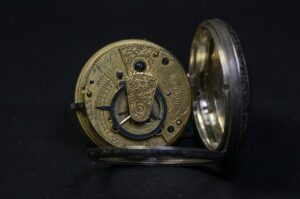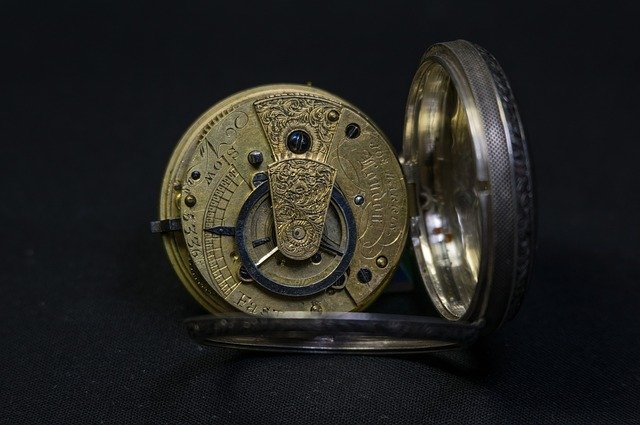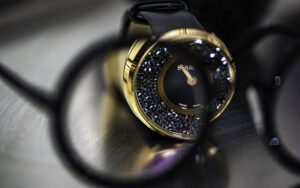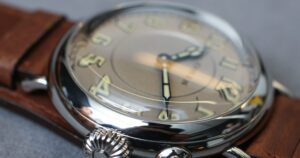“Time doesn’t exist. It’s just a human construct.” Ever heard that silly phrase? Kind of a joke, really. People say that all the time, but it’s interesting because time does exist. It can be seen in the movement of the planets, the stars, the growth of trees and grass, the aging of humans and animals. Time is everywhere; we just had the opportunity to name it.
In our efforts to understand the rather mind-blowing concept of time, we’ve been studying it for millennia. Beyond just studying, we’ve written books on it, created fantasies of ourselves mastering it and crafted some of the most beautiful pieces of art just to tell us what hour of the day it is.

But these complex art pieces weren’t always around to track time. We started off with simple things like nails in candles, shadows and dripping water.
If you’re interested in becoming a hobbyist horologist, knowing the history of the trade may prove useful in giving you more ideas for a collection. And if not, it’s still a great way to show off at family reunions and gain a greater appreciation for the sophisticated time tracking that we now enjoy.
Ancient days
In ancient days, folks often used shadow clocks. Common at the time were giant obelisks, to measure and segment the passage of day. The giant stone pillars weren’t what we would call accurate, and they relied solely on the sun; if it was cloudy or night time, they were a no-go.
Other, larger devices were pyramids. For example, the Mayans used these to help plot and track the equinox and solstice so they could celebrate and party.
Other popularly known clocks were the sundials. You’ve probably heard of them and have most likely seen pictures. A big advantage these had over the other shadow clocks was that these could actually be moved, and as long as they were parallel to the earth’s axis, they were accurate.
Eventually, the Egyptians and Greeks, among a few other peoples, found smaller and easier ways to measure time: water clocks. These were a little more like timers than clocks, however. Many worked by filling a vessel with water and drilling a small hole in the bottom. As the water dripped through, you could tell the passage of time by how much water was left.
Other water clocks used a small boat with a hole in the bottom; this hole caused the boat to take on water until it sank. These timekeepers were used for a variety of things from measuring ancient monologues to the 16th century when Galileo used them for some experiments.
People all the way from China to Japan to Mesopotamia used candle clocks. There were two primary ways these were utilized: nails stuck in the side and lines on a board. When lit, the candle would get shorter, as they do, and as this happened, the nails would eventually fall out and kerplunk on the floor beneath them, often alerting those that set it. Or as it got shorter, the candle’s top would pass by a marked line indicating how much time had passed. These were useful inventions as they worked no mater what time of day it was or what kind of weather they experienced.
Modern days
As the days and years passed, people eventually left these archaic timepieces behind for more accurate, reliable, and easy-to-operate mechanical machines.
These mechanical clocks were first created in Europe in the 13th century. However, they had no dial; they worked by the ringing of bells to tell the hour. These were eventually replaced Eventually they evolved into pendulum swingers and have had several changes even since that time. For example, pocket watches were created. These underwent many different designs until they evolved into what we see now: thin, round and smooth designs that we can slip in and out of pockets, without damaging either the watch or the clothes.
As time continued on, wristwatches actually became quite popular, mainly among women as these timekeepers were more sensitive to the elements and the men were often working outdoors (mind you, this was in the 1800s). But the men came to need wristwatches, sailors, soldiers and pilots especially. The use of a pocket watch required at least one hand and these folks often needed both to hold equipment or pilot the ships.
But mechanical timepieces became old, too. In the 20th century, quartz watches eclipsed mechanical ones on account of their increased accuracy. They could handle a change in the elements better, they could take rough shocks better. All around, they were an improvement.
To this day, there are still improvements coming. We now have satellites that will tell our phones what time we’re at and will change with the time zones. Some still collect mechanical watches; others stick with what’s modern.
Horology has a fascinating history, and if you really want to show off your watch collection, it may be a good idea to look into what others have done before you. After all, we only advance off the shoulders of giants.
And as you grow your watch collection, you’ll need those pieces repaired. No matter your brand, Times Ticking knows how to do it. We can do anything from Swiss Military watch repair to Omega battery replacements and repair. You can bring your watch into our Layton location or mail it in for repairs (people from all over the world send us their new and vintage watches for servicing). Regardless of your watch repair needs, Times Ticking has you covered.




